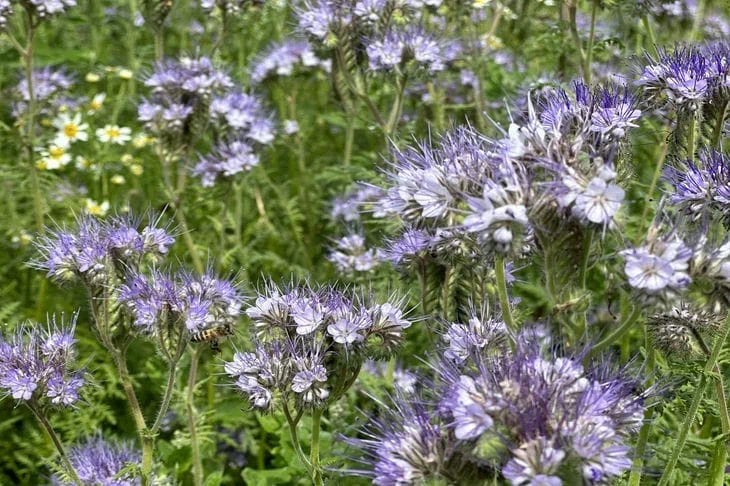Fertile garden soil is like a living organism that requires constant attention and care.
Experienced gardeners know: the correct use of green manure can turn even the poorest plot into a blooming garden.
Among the many plants, phacelia and mustard deserve special attention.

Features of Phacelia
The delicate lilac inflorescences of phacelia attract many beneficial insects. The plant forms a powerful root system, penetrating to a depth of up to two meters, which contributes to the natural loosening of the soil.
Benefits of Mustard
Mustard is characterized by rapid growth and the ability to suppress weeds. Mustard roots secrete substances that enrich the soil with sulfur and phosphorus, and also have phytosanitary properties.
Sowing dates
Phacelia can be sown from early spring to late autumn. Mustard grows best in moderate temperatures, so the optimal sowing time is spring or late summer.
Impact on soil structure
Phacelia promotes the formation of humus and improves the soil structure due to its developed root system. Mustard also loosens the soil, but acts less deeply.
Pest control
Mustard is famous for its ability to cleanse the soil of wireworms and nematodes. Phacelia attracts beneficial insects that help fight pests naturally.
Growth rate
Mustard develops rapidly, forming green mass in 30-40 days. Phacelia requires more time, but it gives a longer lasting effect.
Compatibility with crops
Phacelia is considered a universal predecessor for most garden crops. Mustard is not recommended to be sown before cabbage crops.
Frost resistance
Phacelia can withstand frosts down to minus five degrees. Mustard is more sensitive to cold, which limits its shelf life.
Impact on soil
Phacelia enriches the soil with nitrogen, potassium and phosphorus. Mustard saturates the soil with sulfur and effectively fights pathogenic microorganisms.
Sealing features
Phacelia is best planted in the soil during the flowering period. Mustard should be mown and planted before seeds form to avoid self-seeding.
